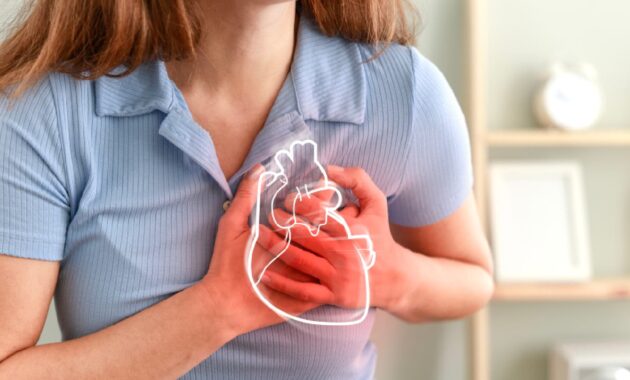Closely associated with heart failure, cardiogenic shock is a life-threatening condition that affects people across various age groups, demanding immediate attention and intervention. Cardiogenic shock is a critical condition that arises when the heart is unable to pump sufficient blood to meet the body’s requirements. This condition is not limited to a particular age group. It can affect individuals of any age, though it is more common among older adults who may already have underlying heart disease. While the incidence of cardiogenic shock is relatively low compared to other heart-related conditions, it is a medical emergency that demands immediate attention. The prognosis is often poor without prompt treatment, making early recognition vital.

Signs and symptoms of cardiogenic shock
The signs and symptoms of cardiogenic shock are often distinct, making them critical for early recognition. Patients may experience:
1. Shortness of breath: Individuals may feel like they can’t catch their breath, even at rest.
2. Confusion or altered mental state: Reduced blood flow to the brain can lead to confusion, anxiety, or even loss of consciousness.
3. Cold and clammy skin: Poor circulation can result in cold, clammy, and pale skin.
4. Rapid heart rate: The heart beats faster in an attempt to compensate for the decreased cardiac output.
5. Low blood pressure: Hypotension, or low blood pressure, is a hallmark sign of cardiogenic shock.
6. Decreased urination: A decrease in urine production can be a sign of inadequate blood flow to the kidneys.
Don’t confuse the symptoms of cardiogenic shock with a heart attack!
Since cardiogenic shock typically occurs in individuals experiencing severe heart attacks, recognising the signs and symptoms of a heart attack is crucial since many of them are common to both conditions. These include a squeezing pain in the chest, pain radiating to the arms, back, or jaw, shortness of breath, sweating, lightheadedness, and nausea. Early recognition of these symptoms not only aids in identifying a heart attack but also plays a vital role in timely intervention for cardiogenic shock, potentially saving lives.
What increases cardiogenic shock risk?
Several factors can increase the risk of cardiogenic shock. The risk of developing cardiogenic shock after a heart attack is heightened if you are of advanced age, have a previous history of heart failure or heart attack, experience blockages in multiple major coronary arteries, have diabetes or hypertension, or are female. These factors increase the vulnerability of a person to cardiogenic shock, underscoring the importance of early recognition and intervention in such high-risk individuals.
Cardiogenic shock treatment primarily aims to mitigate the damage caused by oxygen deficiency to the heart muscle and vital organs. Individuals may require Emergency Life Support, and If necessary, a ventilator may be used to assist them with breathing. Other treatment approaches may include:
Medications for cardiogenic shock
- Vasopressors, such as dopamine and epinephrine, are used to address low blood pressure.
- Inotropic agents like dobutamine and dopamine may be administered to improve heart pumping.
- Aspirin is typically administered to limit blood clotting.
- Antiplatelet medications like clopidogrel are given to prevent new clots.
- Other blood-thinning drugs like heparin reduce clot formation.

Surgeries and procedures to treat cardiogenic shock
- Angioplasty and stenting can open blocked arteries and keep them unobstructed.
- If the Coronaries can’t be opened by angioplasty then Coronary artery bypass surgery requires to create new blood pathways around blocked arteries.
- Surgery can repair heart injuries like tears or valve damage
- A balloon pump in the aorta helps improve blood flow.
- Extracorporeal membrane oxygenation (ECMO) assists blood flow and oxygenation.
- For Isolated LV Dysfunction, A ventricular assist device (LVAD) / Impella can aid heart pumping.
- As a last resort, a heart transplant is considered if other treatments are unsuccessful.
Recognising the signs and symptoms, understanding risk factors, and knowing the available treatment options are crucial in ensuring that patients receive the timely care they need. With advances in medical technology and increased awareness, early recognition and timely intervention can significantly improve the prognosis for individuals at risk of or experiencing cardiogenic shock and help them live a healthier life.
Select Topics of your interest and let us customize your feed.
PERSONALISE NOW
#early #symptoms #cardiogenic #shock
